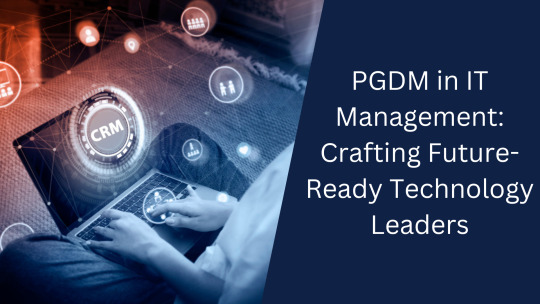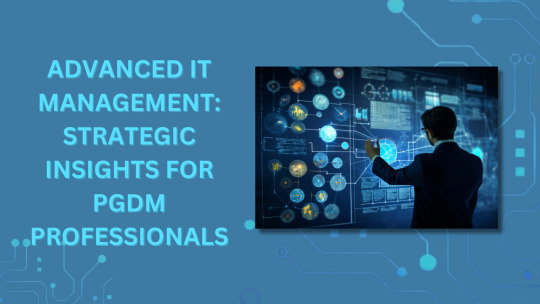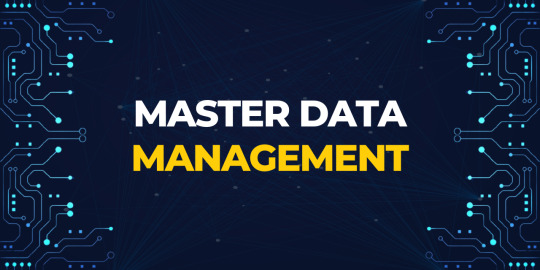#Masters in Technology Management
Explore tagged Tumblr posts
Quote
You have a choice: pursue your dreams, or be hired by someone else to help them fulfill their dreams.
Jay Samit, Disrupt You!: Master Personal Transformation, Seize Opportunity, and Thrive in the Era of Endless Innovation
#quotes#Jay Samit#Disrupt You!: Master Personal Transformation#Seize Opportunity#and Thrive in the Era of Endless Innovation#thepersonalwords#literature#life quotes#prose#lit#spilled ink#business-quotes#change#change-your-life#disruption#disruptive-innovation#disruptive-technology#entrepreneur#entrepreneurial#entrepreneurship#innovation#insightful#inspirational#management#management-and-leadership#management-theory#motivational#self-help#self-improvement#social-media
98 notes
·
View notes
Quote
You will have more regrets for the things you didn't try than the ones you tried and didn't succeed at.
Jay Samit, Disrupt You!: Master Personal Transformation, Seize Opportunity, and Thrive in the Era of Endless Innovation
#Jay Samit#Disrupt You!: Master Personal Transformation#Seize Opportunity#and Thrive in the Era of Endless Innovation#quotelr#quotes#literature#lit#business-quotes#change#change-your-life#disruption#disruptive-innovation#disruptive-technology#entrepreneur#entrepreneurial#entrepreneurship#innovation#insightful#inspirational#management#management-and-leadership#management-theory#motivational#self-help#self-improvement#social-media#startup#teamwork#technology
18 notes
·
View notes
Text
The Sigzen Advantage: Revolutionizing Businesses Through Cutting-Edge Data Center Services
Introduction to Sigzen Sigzen Technologies stands resolute in its commitment to redefine the sphere of IT infrastructure management. Our unwavering mission revolves around empowering businesses with bespoke Data Center Services, finely crafted to cater to their distinct and intricate needs. In the modern landscape, data centers serve as the central hub for managing, processing, and safeguarding…

View On WordPress
#Business Tech Solutions#Data Center Services#Data Management Insights#Digital Evolution#Digital Landscape Overview#IT Infrastructure Explained#IT Success Strategies#Mastering Tech Services#Technology Transformation
2 notes
·
View notes
Text
Ah yes, the TARDIS detector from The Time Monster. One of the best props to ever grace the screen.
So the Doctor created a tracking device to find the Master
However, it looks like this

What did the Doctor mean by this
#The Time Monster sure was an episode#it had EVERYTHING#the Doctor having a nightmare about the Master and calling the Brigadier about it#Yates being attacked by medieval warriors#an agressively feminist scientist#Benton turned into a baby#the Doctor buiding a thingy out of an empty tea cup to mess with the Master's plans#the two TARDISses materializing inside one another#cock-shaped technology#a trip to Atlantis#the Doctor talking backwards....#it was GREAT#managed to be unhinged even by Doctor Who standards#which is an acheivement#Doctor Who
2K notes
·
View notes
Text
An MBA in Technology Management equips you with the skills to lead tech-driven organizations, focusing on strategy, innovation, and business operations.
#mba technology management#master's degree in business administration#master in business management#mba in administration#mba in risk management
0 notes
Text
Data Integration Made Easy: Tools and Techniques for Modern Enterprises
In today’s fast-paced business environment, enterprises rely on vast amounts of data to drive decision-making, improve customer experiences, and streamline operations. However, the sheer volume and variety of data generated across multiple platforms often result in silos that can impede efficiency. This is where data integration becomes indispensable—enabling organizations to unify disparate data sources into a cohesive, actionable framework.

With advancements in technology, data integration tools and techniques have become more sophisticated, offering solutions tailored to the needs of modern enterprises. This article explores the essentials of data integration, discusses best practices, and highlights how Augmented Data Management (ADM) is transforming integration processes.
What is Data Integration?
At its core, data integration is the process of combining data from multiple sources to provide users with a unified view. These sources can include databases, cloud platforms, IoT devices, and legacy systems. The ultimate goal is to make data accessible and usable for analytics, reporting, and real-time decision-making.
For example, an e-commerce business may need to integrate customer data from its website, CRM system, and marketing platform to create a comprehensive customer profile.
The Role of Data Integration Tools
Modern enterprises manage complex data ecosystems, and manual integration methods are no longer sufficient. This is where data integration tools come into play. These tools simplify the process by automating key steps like data extraction, transformation, and loading (ETL).
Popular Data Integration Tools
Informatica PowerCenter: A robust enterprise tool offering ETL capabilities, real-time integration, and advanced data governance features.
Talend: An open-source platform that supports big data, cloud integration, and real-time data processing.
Dell Boomi: A cloud-native tool designed for integrating SaaS applications, data, and APIs.
Microsoft Azure Data Factory: A scalable solution for orchestrating and automating data pipelines across on-premises and cloud environments.
Snowflake: A modern data platform that simplifies integration by offering built-in support for diverse data types and sources.
These tools empower businesses to bridge silos, improve data accessibility, and enable faster decision-making.
Data Integration Best Practices
To ensure seamless and efficient integration, organizations should follow these best practices:
1. Start with a Clear Data Strategy
Before implementing any integration tool, define your goals. Identify key data sources, determine the desired outcomes, and establish KPIs to measure success. For instance, if the goal is to enhance customer experience, prioritize integrating customer-facing systems first.
2. Prioritize Data Quality
Integrating poor-quality data leads to flawed analytics and unreliable decisions. Use tools to cleanse, validate, and standardize data before integration. Metadata management and data profiling can further enhance quality.
3. Adopt Scalable Solutions
As your business grows, so will your data. Choose integration tools and architectures that can scale to accommodate increasing volumes and complexity without compromising performance.
4. Ensure Security and Compliance
Data integration involves handling sensitive information, making security a top priority. Implement robust encryption, access controls, and audit trails. Ensure compliance with regulations like GDPR or CCPA to avoid legal and reputational risks.
5. Leverage Real-Time Integration
For businesses requiring up-to-the-minute insights, real-time integration is essential. Use tools that support event-driven architectures to process data as it’s generated.
6. Monitor and Optimize Continuously
Integration is not a one-time process. Use monitoring tools to track performance, identify bottlenecks, and refine workflows to maintain efficiency over time.
Read - AI-Powered Data Management: The Key to Business Agility in 2025
How ADM is Revolutionizing Data Integration
Augmented Data Management (ADM) is reshaping the data integration landscape by leveraging AI and machine learning to automate and enhance integration processes. Here’s how ADM makes integration easier and more effective:
1. Automating ETL Workflows
ADM systems automate the extraction, transformation, and loading of data, reducing manual effort and ensuring consistency. For example, AI algorithms can automatically detect schema changes and adjust integration workflows accordingly.
2. Intelligent Data Mapping
Mapping data fields from different sources can be a time-consuming task. ADM tools use AI to recognize patterns and relationships, enabling automated data mapping with minimal human intervention.
3. Improving Data Quality
ADM ensures that only high-quality data is integrated by using AI to detect anomalies, cleanse data, and standardize formats in real time.
4. Enhancing Metadata Management
Metadata is crucial for effective integration, providing context about data origin, structure, and usage. ADM platforms automatically generate and enrich metadata, making it easier to track and govern data throughout the integration process.
5. Supporting Hybrid Environments
Modern enterprises often operate in hybrid environments, with data spread across on-premises and cloud systems. ADM tools seamlessly integrate data from diverse environments, ensuring a unified view without disrupting existing workflows.
6. Enabling Self-Service Integration
With user-friendly interfaces and natural language processing capabilities, ADM democratizes integration. Non-technical users can easily set up and manage integration workflows, empowering teams across the organization.
Real-World Applications of Data Integration
1. Retail
Retailers use integration tools to merge sales data from online stores, physical outlets, and loyalty programs. This unified data enables personalized marketing campaigns and optimized inventory management.
2. Healthcare
Hospitals integrate patient data from electronic health records (EHRs), lab results, and wearable devices to deliver more accurate and timely care.
3. Finance
Banks integrate transaction data from multiple channels to detect fraud in real-time and provide seamless customer experiences.
4. Manufacturing
Manufacturers combine IoT sensor data with ERP systems to monitor equipment performance, predict maintenance needs, and minimize downtime.
Read - Augmented Analytics vs. Traditional BI: Why ADM is a Game-Changer
Key Benefits of Modern Data Integration
Improved Decision-Making: A unified view of data enables faster, data-driven decisions.
Enhanced Efficiency: Automation reduces manual workloads, freeing up resources for strategic initiatives.
Cost Savings: By eliminating redundancies and streamlining workflows, integration reduces operational costs.
Increased Agility: Real-time integration allows businesses to respond quickly to market changes and customer demands.
Challenges to Address
While data integration offers significant benefits, organizations may face challenges such as:
Data Silos: Integrating legacy systems with modern platforms can be complex.
High Initial Costs: Implementing advanced tools like ADM may require substantial investment.
Skill Gaps: Teams may need training to fully leverage integration tools and technologies.
By addressing these challenges proactively, businesses can unlock the full potential of their integration strategies.
Conclusion
In the era of big data, effective integration is no longer optional—it’s a strategic necessity. With advancements in data integration tools and the emergence of ADM for integration, enterprises can achieve seamless, scalable, and secure data management.
By following data integration best practices, leveraging cutting-edge tools, and embracing ADM’s transformative capabilities, businesses can break down silos, enhance decision-making, and stay ahead in a competitive landscape.
Data integration made easy isn’t just a tagline—it’s a reality for enterprises that adopt the right tools and techniques to unify their data for a smarter, more connected future.
0 notes
Text
PGDM in IT Management: Crafting Future-Ready Technology Leaders

#Information Technology Management#IT Strategy#PGDM Specialization#Emerging Technologies#Business Technology#Cybersecurity Management#Risk Management#Colleges for IT Management#Colleges in India#Data Analytics#Master’s in IT Management
1 note
·
View note
Text
Post Master’s Certificate in Educational Technology
(no propaganda submitted)
BS in Health Management (Competency Based-DA)
(no propaganda submitted)
#tumblr tournament#poll#University of Pheoenix#round 2#Post Master’s Certificate in Educational Technology#BS in Health Management (Competency Based-DA)
0 notes
Text
Comprehensive IT Management: Key Concepts for PGDM Specialization

#Information Technology Management#IT Strategy#PGDM Specialization#Emerging Technologies#Business Technology#Cybersecurity Management#Risk Management#Colleges for IT Management#Colleges in India#Data Analytics#Master’s in IT Management
1 note
·
View note
Text
Real Businesses Achieving Success with SAP Solutions
In today’s competitive business environment, organizations must adopt innovative solutions to streamline operations and enhance productivity. Hartmans SAP Consultancy specializes in guiding companies toward success with SAP solutions. These solutions have transformed countless businesses by optimizing processes, improving data management, and empowering employees. In this blog, we will highlight real businesses that have achieved significant success with SAP and explore how SAP Implementation & Integration, Master Data Management, and Advanced SAP Training have played vital roles in their journeys.
The Impact of SAP Solutions
SAP (Systems, Applications, and Products in Data Processing) is a leading enterprise resource planning (ERP) software that integrates various business functions into a cohesive system. By leveraging SAP, organizations can achieve enhanced visibility into their operations, automate repetitive tasks, and make informed decisions based on real-time data. This comprehensive approach not only reduces inefficiencies but also drives growth and innovation.
Case Study: Company A – Streamlined Operations through SAP Implementation
Company A, a mid-sized manufacturing firm, faced challenges with manual processes that hampered productivity and led to errors. Recognizing the need for change, they partnered with Hartmans SAP Consultancy for SAP Implementation & Integration. Our team conducted a thorough assessment of their existing workflows and tailored the SAP system to fit their specific needs.
The implementation resulted in significant improvements. With automated processes and centralized data, Company A reduced production lead times by 30%. Employees could access real-time information, enabling them to respond quickly to customer inquiries and streamline order fulfillment. This transformation not only enhanced operational efficiency but also led to higher customer satisfaction and retention rates.
Case Study: Company B – Mastering Data with MDM
Company B, a retail company, struggled with inconsistent product data across multiple systems, leading to confusion among staff and customers. To address this challenge, they engaged Hartmans SAP Consultancy to enhance their Master Data Management (MDM) practices using SAP solutions.
Through our expertise, Company B established a centralized data governance framework, ensuring that all product information was accurate and consistent across platforms. The result was remarkable. Inventory discrepancies decreased by 40%, and employees could trust the data they used for decision-making. This newfound data integrity enabled Company B to optimize its inventory management and reduce excess stock, resulting in cost savings and improved profitability.
Case Study: Company C – Empowering Employees with Advanced SAP Training
Company C, a financial services firm, recognized that their team needed to enhance their skills to maximize the benefits of their SAP system. They partnered with Hartmans SAP Consultancy to implement Advanced SAP Training programs for their employees.
Our training sessions were designed to meet the varying levels of expertise within the organization. From foundational knowledge for new users to advanced courses on specific SAP functionalities, the training empowered employees to utilize the system effectively. As a result, productivity increased by 25%, and the team was better equipped to leverage SAP’s analytics capabilities for strategic decision-making.
Key Takeaways
The success stories of Company A, Company B, and Company C illustrate the transformative power of SAP solutions. Whether through effective SAP Implementation & Integration, robust Master Data Management, or comprehensive Advanced SAP Training, businesses can unlock the full potential of their SAP systems. Here are some key takeaways for organizations considering SAP solutions:
Invest in Proper Implementation: A well-executed implementation is critical for realizing the benefits of SAP. Engage experts to tailor the system to your specific needs, ensuring seamless integration with existing workflows.
Prioritize Data Management: Maintaining accurate and consistent data is essential for informed decision-making. Implementing strong MDM practices can reduce discrepancies and enhance operational efficiency.
Empower Your Workforce: Continuous training and development are crucial for maximizing the potential of SAP solutions. Investing in employee training fosters confidence and competence, driving productivity and innovation.
Conclusion
SAP solutions have proven to be a game-changer for businesses looking to enhance efficiency, improve data management, and empower their workforce. By partnering with Hartmans SAP Consultancy, organizations can embark on a transformative journey that leads to measurable success.If you’re ready to take your business to the next level with SAP solutions, reach out to us today. Our team of experts is here to guide you through the process of SAP Implementation & Integration, establish effective Master Data Management practices, and provide Advanced SAP Training tailored to your organization’s unique needs. Together, we can achieve remarkable results and set your business on a path to long-term success.
#SAP Consultancy#Master Data Management#Advanced SAP Training#SAP Implementation & Integration#SAP solutions#sap#SAP technology
1 note
·
View note
Quote
The real challenge is for each of us to determine where we feel we can make the most impact.
Jay Samit, Disrupt You!: Master Personal Transformation, Seize Opportunity, and Thrive in the Era of Endless Innovation
#quotes#Jay Samit#Disrupt You!: Master Personal Transformation#Seize Opportunity#and Thrive in the Era of Endless Innovation#thepersonalwords#literature#life quotes#prose#lit#spilled ink#business-quotes#change#change-your-life#disruption#disruptive-innovation#disruptive-technology#entrepreneur#entrepreneurial#entrepreneurship#innovation#insightful#inspirational#management#management-and-leadership#management-theory#motivational#purpose#purpose-of-life#purposeful-living
22 notes
·
View notes
Quote
There are riches to be found simply by capturing the value released through others' disruptive breakthroughs.
Jay Samit, Disrupt You!: Master Personal Transformation, Seize Opportunity, and Thrive in the Era of Endless Innovation
#Jay Samit#Disrupt You!: Master Personal Transformation#Seize Opportunity#and Thrive in the Era of Endless Innovation#quotelr#quotes#literature#lit#business-quotes#change#change-your-life#disruption#disruptive-innovation#disruptive-technology#entrepreneur#entrepreneurial#entrepreneurship#innovation#insightful#inspirational#management#management-and-leadership#management-theory#motivational#self-help#self-improvement#social-media#startup#teamwork#technology
0 notes
Text
Our NetSuite practice includes a proven team of implementation consultants, business analysts, and subject matter experts that support sectors like Retail, eCommerce, Manufacturing, Oil & Gas, Hospitality and Non-profit.
#Boomi-solutions-services#Boomi solutions#Boomi integration services#Boomi ipaas integration services#Boomi technology#What is boomi?#Boomi integration platform#Boomi master data management#Boomi API management
0 notes
Text
Advanced IT Management: Strategic Insights for PGDM Professionals

#Information Technology Management#IT Strategy#PGDM Specialization#Emerging Technologies#Business Technology#Cybersecurity Management#Risk Management#Colleges for IT Management#Colleges in Bangalore#Data Analytics#Master’s in IT Management
1 note
·
View note
Text
Future of Master Data Management: Trends in Entity Resolution and Beyond
As organizations increasingly depend on data to drive decisions, operations, and strategies, Master Data Management (MDM) has evolved from being a backend IT tool to a strategic business enabler. Central to this transformation is the advancement of entity resolution, a critical process within MDM that identifies, reconciles, and consolidates data to create a unified view of entities such as customers, products, and suppliers.

The future of Master Data Management is shaped not only by innovations in entity resolution but also by broader trends that enhance data governance, quality, and usability. This article explores these trends and offers insights into how businesses can prepare for the future of MDM.
The Role of Entity Resolution in MDM
Entity resolution is the backbone of effective MDM, enabling businesses to identify and merge duplicate or fragmented records into a single source of truth. Traditionally reliant on deterministic rules and manual interventions, entity resolution has undergone significant advancements with the advent of intelligent technologies.
Current Trends in Entity Resolution
AI-Driven Algorithms Artificial intelligence and machine learning are redefining entity resolution by automating the matching process. These algorithms can:
Detect subtle similarities across data records.
Continuously improve by learning from new patterns and user feedback.
Reduce false positives and negatives in matching.
Fuzzy Matching Techniques Modern entity resolution systems use fuzzy matching to identify records with slight variations (e.g., “Jon Smith” vs. “John Smyth”). This is particularly valuable for businesses managing multilingual or international datasets.
Real-Time Resolution With the growing need for instant insights, real-time entity resolution has become a priority. Organizations can now process and unify data as it is generated, enabling faster decision-making.
Graph-Based Resolution Graph databases are increasingly used for entity resolution, as they allow businesses to map relationships between entities effectively. For example, a graph-based approach can link customer profiles to their social networks, transaction histories, and support interactions.
Beyond Entity Resolution: Emerging Trends in MDM
While entity resolution remains critical, the future of MDM extends far beyond it. Businesses are leveraging new technologies and approaches to address the evolving complexities of data management.
1. Cloud-Native MDM
Cloud adoption is transforming MDM by offering:
Scalability: Easily handle growing data volumes.
Cost Efficiency: Shift from capital expenditures to a pay-as-you-go model.
Global Accessibility: Enable teams across geographies to access and manage master data seamlessly.
Example: A global retailer migrated its MDM system to the cloud, achieving 40% faster processing speeds and enabling real-time updates for its international teams.
2. Decentralized MDM with Blockchain
Blockchain technology is emerging as a promising solution for decentralized MDM, particularly in industries like supply chain and healthcare. Benefits include:
Enhanced data integrity and immutability.
Improved transparency and traceability.
Secure sharing of master data across trusted parties.
3. AI and ML Integration
Artificial intelligence and machine learning are enhancing MDM in areas beyond entity resolution:
Predictive Analytics: MDM systems can forecast trends by analyzing historical data.
Data Enrichment: AI-driven tools automatically fill gaps in master data using external sources.
Anomaly Detection: Machine learning models identify and flag inconsistent or suspicious data.
Read - A Step-by-Step Guide to MDM Implementation and Modernization
4. Data as a Service (DaaS)
MDM is evolving into a service-oriented model, allowing organizations to consume and manage master data on demand. This trend aligns with the broader shift towards service-based architectures in IT.
5. Focus on Data Privacy and Compliance
As data privacy regulations like GDPR and CCPA become more stringent, MDM systems are incorporating features to ensure compliance:
Automated consent management.
Data masking and encryption.
Detailed audit trails for data lineage.
6. Multi-Domain MDM
Traditionally, MDM focused on a single domain, such as customer or product data. However, businesses now require multi-domain MDM solutions to manage interconnected data across domains seamlessly.
Example: A financial institution implemented multi-domain MDM to link customer data with transaction histories and compliance records, improving fraud detection and reporting efficiency.
Real-World Impact of Future MDM Trends
Retail Sector Advanced MDM capabilities allow retailers to create 360-degree customer views, enabling personalized marketing, inventory optimization, and seamless omnichannel experiences.
Healthcare With accurate patient records unified across systems, MDM helps improve treatment plans, reduce medical errors, and ensure compliance with data regulations.
Financial Services MDM enables banks and insurance companies to manage risk effectively, streamline compliance reporting, and enhance customer onboarding processes.
Challenges and How to Overcome Them
Data Complexity Managing unstructured and semi-structured data remains a challenge. Organizations can overcome this by investing in AI-driven tools that process diverse data types.
Integration Issues Integrating legacy systems with modern MDM architectures requires careful planning and expertise. A phased migration approach and the use of APIs can simplify the process.
Cultural Resistance Adopting new MDM technologies often faces resistance from employees accustomed to legacy systems. Comprehensive training and clear communication about benefits can address this issue.
Preparing for the Future of MDM
To stay ahead, businesses should:
Adopt Intelligent MDM Tools: Leverage AI and machine learning to automate and enhance entity resolution.
Invest in Cloud-Based Solutions: Embrace the flexibility and scalability of cloud-native MDM platforms.
Prioritize Data Governance: Establish strong governance frameworks to maintain data quality and compliance.
Focus on Interoperability: Ensure MDM systems integrate seamlessly with other enterprise applications.
Conclusion
The future of Master Data Management lies in its ability to adapt to evolving data challenges and leverage cutting-edge technologies. While entity resolution will remain a core function, advancements in AI, cloud computing, blockchain, and multi-domain capabilities are poised to redefine how organizations manage and utilize master data.
By staying ahead of these trends, businesses can unlock the full potential of their data assets, driving innovation, efficiency, and competitive advantage. In a world increasingly powered by data, the future of MDM promises exciting opportunities for those willing to embrace change.
0 notes
Text
Mastering IT Management: Strategies for Success in the Digital Age

#Information Technology Management#IT Strategy#PGDM Specialization#Emerging Technologies#Business Technology#Cybersecurity Management#Risk Management#Colleges for IT Management#Colleges in India#Data Analytics#Master’s in IT Management
1 note
·
View note